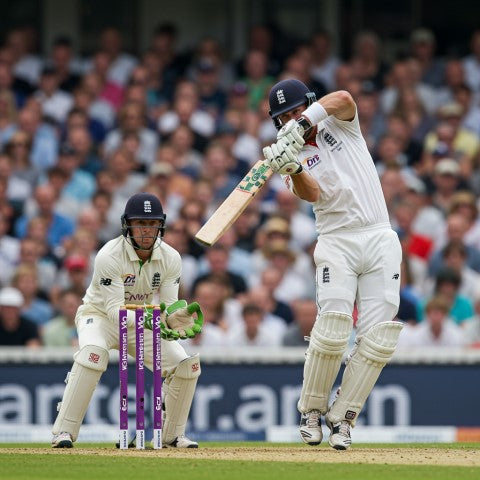Urban Legends in Cricket: From Tape-Ball Origins to Haunted Pavilions
Cricket is a sport built on tradition — but every tradition has its myths. Look closely enough, and you’ll find the boundary ropes fraying with rumours, the outfields echoing with stories too strange to verify yet too juicy to dismiss. From whispered superstitions in changing rooms to ghost sightings in stadiums older than the game itself, cricket has more urban legends than a pub after last orders.
Some of these tales are playful exaggerations. Others, stubbornly persistent. And a few… well, a few have just enough evidence to make you pause.
This is the shadowy side of the gentleman’s game — where science meets folklore, and every swing of the bat might come with a side of ghostly drama or inexplicable fate. These aren’t just stories; they’re oral history. They’re what kids in Karachi grow up believing and what veterans in county dressing rooms still half-joke about.
So pad up and step out — not just onto the pitch, but into the strange, often hilarious, sometimes haunting world of cricket’s urban legends.
1. The Tape-Ball Revolution: Fact, Fiction, and Karachi’s Concrete Wickets
No one can agree exactly when tape-ball cricket began, but everyone agrees on one thing: it changed everything. Legend has it that in a backstreet of Karachi, a group of lads wrapped electrical tape around a tennis ball, trying to mimic the swing of a leather one without risking broken windows. What they accidentally created was a format that would go on to produce some of the most lethal pace bowlers the world has ever seen.
But here’s where the legend thickens. Some say it wasn’t Karachi at all, but Lahore. Others insist it started in the UAE migrant worker camps. One persistent rumour claims it was devised by bored engineers in a university hostel trying to “aerodynamically modify” backyard cricket.
What’s not in dispute is the result. Tape-ball cricket created a raw, stripped-down, unforgiving format where pace ruled and technique had to adapt. Short run-ups, skiddy actions, back-of-the-hand slower balls — all born from concrete wickets and improvised equipment. Even Babar Azam and Shaheen Afridi credit tape-ball with sharpening their instincts.
It's now its own subculture, with tournaments across Pakistan, Bangladesh, the UK, and even Canada. The mythic origins only add to its appeal. Ask a street cricketer, and they’ll tell you — tape-ball didn’t just evolve the game. It re-wrote its street rulebook.
2. The Ghost of Lord’s Pavilion: Tales from the Long Room
The Long Room at Lord’s is a place of reverence. Silence. Respect. History. And, if certain whispers are to be believed, ghosts.
Several MCC staff members — always off the record — have reported odd happenings in the Long Room after dark. Footsteps when no one’s around. Doors opening with no wind. Portraits that seem… slightly different in the morning. One curator swears he once heard polite clapping echoing through the empty stands, long after a rainout.
Then there’s the dressing room. In 1997, a county player allegedly refused to enter it alone, claiming a “gentleman in full whites” had nodded at him before vanishing. His teammates, naturally, laughed. Until one of them found their whites mysteriously damp and laid out on the floor — despite being packed away.
No one officially acknowledges these stories, but they persist. Some say it’s W.G. Grace, forever irritated at modern technique. Others joke it’s Don Bradman, silently judging batting averages. Whatever the cause, Lord’s has enough history to haunt itself.
Of course, the Long Room is still sacred — but maybe keep a respectful nod ready. Just in case you’re not the only one passing through.
3. Wasim’s Swing: The Ball That Bent Physics
Wasim Akram’s reverse swing was so wicked, so unnatural, that commentators called it sorcery. And like all sorcery, it spawned myths.
The most enduring? That he once bowled a delivery that started wide of off stump, reversed at the last second, and clipped leg — without the batter moving. There’s no footage, of course. Only testimonies. Players who swear they saw it. Fielders who recall the batsman walking off shaking his head, muttering about “black magic”.
The myth goes further. Some claim Wasim had a specific seam position known only to him — passed down in hushed sessions by Imran Khan. Others say he used hair oil to subtly affect ball shine (a trick he’s laughed off in interviews). One theory? He inhaled deeply before his run-up to change air pressure around the ball.
Even science tried to catch up. Physicists from the UK and Australia examined Wasim’s bowling with high-speed cameras. They found turbulence, seam angle anomalies, and ball rotation quirks — none of which fully explained the swing’s severity.
Myth or not, the narrative around Wasim grew larger than the man. Opponents feared him. Teammates trusted him. And fans believed — not just in his skill, but in something beyond skill.
4. The Curse of the Nervous Nineties
It starts around 87. By 92, your teammates are whispering. The fielders are crowding. The bowler senses blood. You’re not playing a bowler anymore — you’re playing a number: 100.
And in cricket’s strange folklore, few numbers carry more mythical weight than 99. The nervous nineties aren’t just a psychological phenomenon; some insist they’re a curse.
The legend gained steam when legends themselves fell victim. Tendulkar out on 99 — five times. Michael Slater, bowled on 99, was said to have thrown his gloves at the wall so hard it cracked. More than a few believe it’s not coincidence — it’s cricket’s way of keeping you humble.
Some players have their own rituals. Mark Waugh once chewed the same brand of gum every innings. AB de Villiers was known to slow down around 90, almost as if tiptoeing toward triple figures. In contrast, Virender Sehwag — who famously said “If it’s in the arc, it’s out of the park” — never believed in the curse. He often brought up centuries with sixes, shattering the myth through bravado.
But still, ask any commentator. When a batter hits 95, the phrase writes itself: “the nervous nineties”. It’s half joke, half incantation. And even now, we all hold our breath at 99 — wondering if today, the curse claims another.
5. The Spectral Scoreboard of Eden Gardens
Eden Gardens is one of cricket’s great theatres — a place where 60,000 voices can rise like a cyclone. But long after the crowd has gone, some say the ground speaks in quieter, stranger ways.
Groundsmen working late shifts have reported flickering scoreboard lights, glitches where a batter’s score resets without human input, and the occasional eerie update that appears… before the run is actually scored. It’s always brushed off as faulty wiring. Until the lights return to normal before the technician arrives.
One long-time steward told a journalist off the record that during a foggy evening in the 90s, the manual scoreboard clicked into position for a batter who hadn’t yet reached the crease. The next ball? A golden duck. Coincidence? Maybe. But no one could explain how the name had been pre-loaded.
The electronic system has since been upgraded. But the myth persists — especially during late-night maintenance or during monsoon season, when visibility is poor and imaginations run high.
It’s just tech, they say. But in Kolkata, where cricket and mysticism often overlap, no one fully rules out the possibility that Eden has a memory of its own.
6. Sachin’s Dreams: The Prophetic Night Before the Desert Storm
Ask any Indian fan about Sachin Tendulkar’s twin centuries at Sharjah in 1998 — and you’ll get not just facts, but folklore.
But one tale that’s quietly made its way through coaching circles and ex-teammates is that Tendulkar dreamt the innings the night before. The story goes that he told a teammate about “something big coming” — a rare instance of premonition from cricket’s most modest icon.
According to the legend, he visualised Shane Warne bowling short, the wind swirling off the desert, and his bat connecting cleanly for six after six. Warne later joked that those innings gave him nightmares — only fuelling the myth further.
There’s no formal record of this dream. Tendulkar’s own autobiography avoids the supernatural. But what sticks is the vibe: the sense that something inevitable was happening that day. The wind, the sandstorm, the low-hanging sun — and Sachin, alone in the eye of it all, like he already knew how the script would unfold.
Whether true or embellished, the story speaks to something deeper in cricket fandom — the belief that some players aren’t just great. They’re touched by something higher.
7. Whispers in the WACA: The Phantom Bowler of Perth
The WACA in Perth is known for pace, bounce, and… a bowler no one has ever seen.
This tale began with night net sessions. Several domestic players reported hearing the distinct thud of a ball hitting the pitch — followed by the whistle of a short ball rushing past — despite no one bowling. Coaches dismissed it as imagination. But then a batting coach claimed he saw a shadowy figure in the non-striker’s end. When he looked up, it was gone.
The phenomenon has been dubbed “The Phantom Bowler”. It's said he bowls only short balls. Only at night. And only to those on the brink of selection.
In 2004, an aspiring fast bowler reportedly stopped bowling at the WACA after hearing footsteps behind him during his run-up. No one else was on the square. His form dipped after that. Coincidence? Or did the phantom make his point?
Some link it to an early 20th-century club cricketer who collapsed at the ground, mid-over. Others say it's just wind tunnels and fast echoes. But a few players — especially those who never quite made it — still avoid night sessions there. Just in case.
8. Umpire in the Mirror: The Sinister Legend of the Third Man
Not all legends are about players. One of cricket’s most chilling tales involves an umpire — or rather, an extra one.
Dubbed “The Third Man,” the legend tells of an unidentifiable figure occasionally spotted in old replays — never facing the camera, always near the boundary, hands behind his back like a match official. Broadcasters have shrugged it off as a cameraman or security. But footage analysts claim this figure shows up in games played decades apart — always in black trousers, always still.
In one infamous tale, a domestic final in South Africa was paused when players demanded clarity about a “stray umpire” standing at deep square. Officials insisted no one else was assigned to that side. When security checked the area, it was empty — yet a player still swears he saw “a man signalling leg byes.”
It gets weirder. At least three players across leagues have mentioned “seeing an umpire who wasn’t there” mid-delivery — each time triggering a wide or no-ball that replay later showed wasn’t valid.
Is it mass suggestion? Frayed nerves? Or just one of those stories that won’t go away?
Either way, the Third Man remains cricket’s strangest figure. Always there. Always unseen.
Conclusion: More Than Just Myths — Why Cricket’s Stories Matter
Cricket thrives on stats, technique, and structure. But it also thrives on whispers — the tall tales, the what-ifs, the campfire stories told on long away tours or over a drink at the club bar.
These urban legends may not hold up under scientific scrutiny, but they hold up somewhere else: in the cultural memory of the game. Whether it’s Wasim’s impossible swing, Sachin’s prophetic dream, or the mysterious umpire seen in old footage, these stories add texture to cricket. They make it feel older, richer, stranger.
And maybe that’s the point. Cricket is not just a sport. It’s a myth-making machine. Its fields are lined not just with boundaries, but with the borders of belief.
So next time you hear a tale that sounds too bizarre to be true, don’t dismiss it outright. In cricket, the line between fact and folklore is often no wider than the width of a bail.
And who knows? That whisper in the outfield?
Might just be history playing tricks again.





Leave a comment